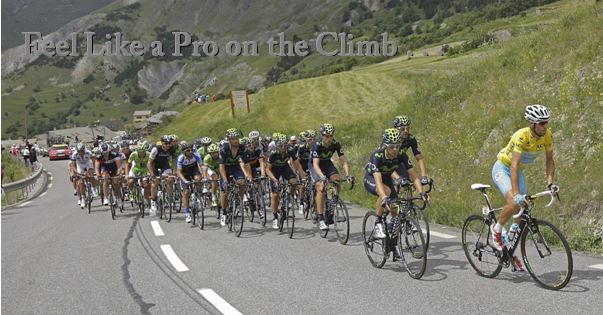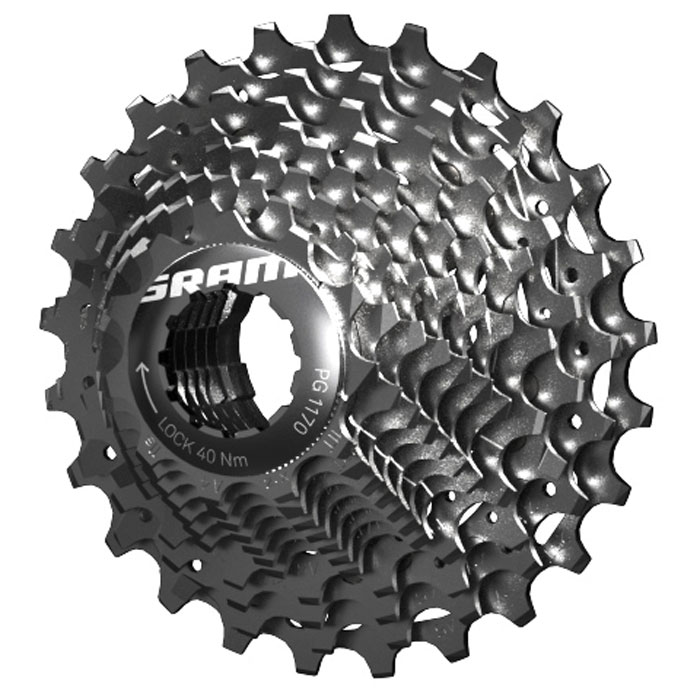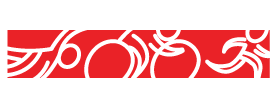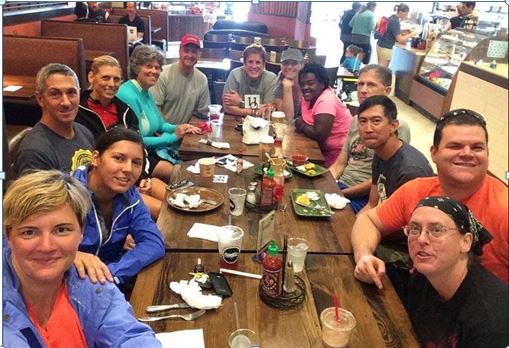 Can you ride any hill without walking, do it as fast as you like, and have something left for the rest of the ride or run? Many of us answered no to at least one part of that question so joined the St. Louis TriClub on Sunday, August 23, 2015 for the cycling hill clinic. Club rookies and elite gathered for the clinic at Babler State Park, a popular venue for cyclist looking for hill work. It offers climbs that are either long, steep or both on a shady course with little traffic. In just 13 miles, I showed an elevation gain of 1184 ft, and that was with a warm up on flatter terrain. (On a separate occasion, a ride through the park showed 21 miles with an elevation gain of 2423 ft and that did not include one hill).
Can you ride any hill without walking, do it as fast as you like, and have something left for the rest of the ride or run? Many of us answered no to at least one part of that question so joined the St. Louis TriClub on Sunday, August 23, 2015 for the cycling hill clinic. Club rookies and elite gathered for the clinic at Babler State Park, a popular venue for cyclist looking for hill work. It offers climbs that are either long, steep or both on a shady course with little traffic. In just 13 miles, I showed an elevation gain of 1184 ft, and that was with a warm up on flatter terrain. (On a separate occasion, a ride through the park showed 21 miles with an elevation gain of 2423 ft and that did not include one hill).
Jennifer Meyer of TriSmart Training Systems started the ride with a warm-up followed by instructions and strategy. More experienced club members (Irwin Tani, Edgar Amezcua, and Chris Schmidt) shared their tips and reinforced the guidelines. Did anyone say cadence? I have heard this numerous times, but was finally ready to embrace it. This excellent clinic prepared us to more effectively tackle the challenging course while minimizing the odds of injury. If you weren’t able to make the clinic, following are key takeaways.
- First, warm-up by spinning out legs on a flatter surface before tackling the big hills. Yes, you can ride a straight away and turn before going down or up to complete your warm up.
- Make sure your weight is on top of the pedal pushing down. Sounds obvious, but something clicked upon hearing this. When I focused on that I could feel a difference and so could my calves.
- Relax your upper body – don’t be the first athlete to blow a bicep on the bike course. You shouldn’t try to pull yourself up the course, let your legs do the work.
- Target a Cadence of 95-105. Cadence (or pedaling rate) is the number of revolutions of the crank per minute.
- It’s ok to use your easiest gear in the first third of the climb. A lot of beginning cyclists tend to go too hard in too big a gear at the start of a climb. By starting out in the easiest gear, you can set a good rhythm and cadence and keep that going all the way up. You can always change to a harder gear depending on what the hill does. On hills that are steep right at the start, being in the easy gear ensures that you don’t lose momentum or risk falling over.
- The goal is to have enough strength and energy left to accelerate when you crest.
- Pedal during the downhill, it’s not an excuse for rest.
- Know your cassette, if you are having trouble with cadence consider switching out the cassette.
 If the largest cog on your rear cassette is 25 or less, the easiest and least expensive change you can make on your bike is to change out the cassette for something with a 27 or 28 as the largest cog. This change made all the difference me for. I switched out my cassette and could actually focus on cadence this time. In the past it was impossible as I was mashing in my easiest gear. A nice surprise was that for my bike it was inexpensive ($40 range depending on cassette chosen) and quick. I had the work done in a day provided the part was in stock. Another option is to change the front chain rings, but is typically a more expensive bike part and more involved to replace. Check with Big Shark Bicycle Company to see what your best options are.
If the largest cog on your rear cassette is 25 or less, the easiest and least expensive change you can make on your bike is to change out the cassette for something with a 27 or 28 as the largest cog. This change made all the difference me for. I switched out my cassette and could actually focus on cadence this time. In the past it was impossible as I was mashing in my easiest gear. A nice surprise was that for my bike it was inexpensive ($40 range depending on cassette chosen) and quick. I had the work done in a day provided the part was in stock. Another option is to change the front chain rings, but is typically a more expensive bike part and more involved to replace. Check with Big Shark Bicycle Company to see what your best options are.
A big thanks to all who participated in the clinic and a very big thank you to Jennifer Meyer for joining and leading us. For those of us new to hills, or who have been mashing through the course, this will make all of the difference.






Thanks for sharing this. I wish I could have made this clinic.
Wisdom from Irwin Tani: “I’ve got a granny gear, and I’m not afraid to use it”!
Irwin is pretty much a Jedi Knight.